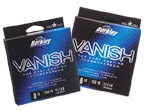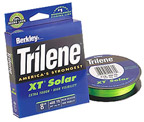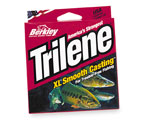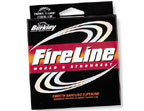





















Free 90 day Risk free trial offer click
here
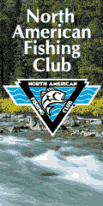
|
When Inches mean Pounds
By John Kolinski
EDITOR’S NOTE: John Kolinski is an eight-time championship qualifier
during
his seven years of professional fishing on the Professional Walleye
Trail and
the Masters Walleye Circuit.
By nature, competitive walleye anglers are weight-watchers, and that
doesn't
apply strictly to their waistlines. There are times during a walleye's
seasonal routine, and particularly the immediate postspawn period, when
inches of water can put pounds of fish in your boat or on your stringer.
For years, many anglers have bought into the age-old theory that postspawn
female walleyes go into a strict rest and recovery funk and become all
but impossible to catch. In turn, those anglers spend their time exploring
deeper lake haunts or backwater holes on river systems hoping to catch
a few males while they wait for the big girls to become active.
Over the last few years, I've become a firm believer that shallow water
is
the place to be. It's not a big window of opportunity, covering maybe
three
weeks, but it's a time period that can produce outstanding numbers
of big fish.
Everyone has a different idea of what defines shallow water. I've heard
many
anglers describe a bite in six to eight feet as a shallow-water bite.
I tend to
look in even less water -- from one to four feet
.
When you consider what is most important to a post-spawn walleye, the
shallow-water approach makes a lot of sense. These fish want to eat,
and they
want to expend as little energy as possible while doing it as they
regain their
strength after the rigors of procreation. Shallow water is typically
a few degrees warmer than the main body of a lake or river, which in turn
draws baitfish into areas where they are easy for the walleyes to catch.
In river systems, I've seen small shad and other baitfish scatter when
I've pitched a jig or crankbait up next to shore. On my home waterof Lake
Winnebago, I've been able to see the baitfish and been able to catch walleyes
from shoreline areas that don't produce any other time of year. Shallow
water often holds structure such as rocks, wood or even vegetation that
provide perfect ambush places. And finally, in river systems, shallow water
typically means less current for the fish to battle.Another condition that
often factors into the equation is the high, murky water that typically
accompanies spring. Dirty water provides a sense of security that will
keep walleyes shallow when clear water might drive them elsewhere. And
while dirty water is often a spring constant in river systems, it may take
a little wind to stir things up and make those hungry females comfortable
in some lakes and reservoirs.
Two different scenarios can present themselves in natural lakes during
the
postspawn period. There will usually be a group of fish that dawdles
in a
shallow basin of a lake for several weeks after the spawn. There will
also be a
group of fish that spawn in areas adjacent to deeper water, then hold
nearby
while slipping up shallow for brief periods to feed. The important
thing to remember is that none of these fish are moving great distances
to feed. They are conserving energy and won't be far away from day to day.
Jigs and crankbaits are both productive presentations for catching
these fish. In both cases, however, it pays to stay back from the shoreline
you are fishing and make long casts. You will avoid spooking extremely
shallow fish as well as cover both the shoreline and the first breakline
off shore where the fish may be holding in between feeding binges. I prefer
to use a 7 foot  TC4 Spinning Rod with a moderate fast tip matched with a TICA Camry GP3000
Spinning Reel.
TC4 Spinning Rod with a moderate fast tip matched with a TICA Camry GP3000
Spinning Reel.
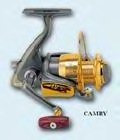
TICA Camry GP 3000 |
The long spool and double worm support system on the TICA GR/GP reels
provides an incredibly smooth and even line winding on to the spool.
This allows for faster, longer and more precise casting. |
Crankbaits allow an angler to cover water quickly. My favorites at this
time
of year are shallow  Shad Raps in size 7 or 8. I've also had good success with Rattlin' Thin
Fins. Both baits can be slow-rolled to appeal to less aggressive fish while
retaining enough action to get their attention. Both baits also imitate
shad or shiners, and it always pays to match the forage as much as possible.
Finally, both baits have a short profile, which I believe makes them
Shad Raps in size 7 or 8. I've also had good success with Rattlin' Thin
Fins. Both baits can be slow-rolled to appeal to less aggressive fish while
retaining enough action to get their attention. Both baits also imitate
shad or shiners, and it always pays to match the forage as much as possible.
Finally, both baits have a short profile, which I believe makes them
an easier target for a lazy walleye.With any crankbait, tuning is critical.
I like to vary my retrieve speed. I'll give the bait a few quick cranks,
let it come to a complete stop and continue with an ultra-slow retrieve
until I learn which method triggers more strikes. An untuned crankbait
will often kick out to one side or roll over when
retrieved at higher speeds. You can tune them by pulling them swiftly
through
the water next to your boat or shore to see how they react. Whichever
direction
they kick out away from you, bend the eye slightly in the opposite
direction
until they run true.
Jigs work well when the fish are even more lethargic. Go as light as
possible
to provide a slower fall and keep the jig in the fish's strike zone
longer. That
could mean using something as small as 1/16th ounce. Plastic tails
will help
slow the fall, too. Live bait, typically minnows during the spring,
will enhance
your presentation and add additional buoyancy to small jigs.
One problem that can occur while fishing jigs in shallow water in lakes
or
rivers is debris. That's another reason to go lightweight. It also
helps to keep
the jig moving rather than letting it drop to the bottom, at least
until you get a few feet offshore.
|
|
Your choice of line can be important. Berkley's Solar
high-visability
monofilament or high-vis green Fireline
help an angler keep visual contact in
murky water and detect strikes in windy conditions. When the water
is clearer,
Vanish
or
clear Trilene
XL are good choices that cast well. |
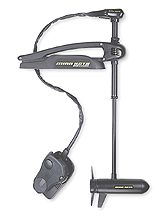
|
Any time you are fishing a lot of shallow water, a quality bow-mount
trolling
motor is another essential. It's going to get a workout, and it's sometimes
going to need the stamina to pull you around all day. My Minnkota
101 with 101 pounds of thrust has never let me down. |
Any time you are fishing a lot of shallow water, a quality bow-mount trolling
motor is another essential. It's going to get a workout, and it's sometimes
going to need the stamina to pull you around all day. My Minnkota 101
with 101
pounds of thrust has never let me down.
Join the walleye weight-watchers this spring. Take off a few inches
and take
out a few pounds, but be considerate of the resource. Take only what
you can eat
and always eat what you take. Turn those big females loose for the
anglers of
tommorow.
E-mail
John Kolinski

Walleyes Inc. web site is maintained
by Randy
Tyler Fishing the In-Fisherman Professional Walleye Circuit, Masters
Walleye Circuit, RCL and the Team Walleye Circuit. All rights reserved.
Copyright 1999/2001
Please visit these site sponsors
Daiichi/Tru-Turn Hooks,
Lindy
Little Joe,
R-A.M Mounting Systems,
Ranger
boats, Mercury Marine, Bedford
Sales , Hamby's Beaching Bumpers,
Goldeneye
Marine products, Panther
Marine Products, Webfoots body
sock, Bait Rigs Tackle
|





